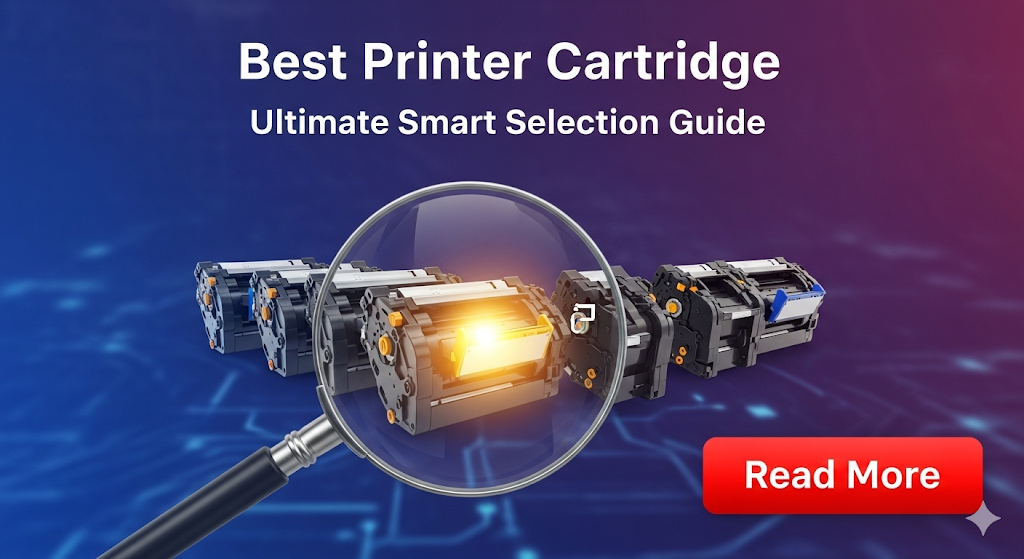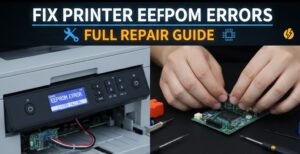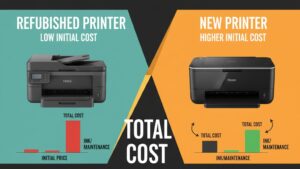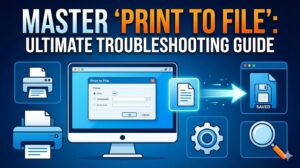Introduction
Choosing the best printer cartridge can dramatically impact your printing costs and document quality while preventing frustrating compatibility issues. With cartridge prices often exceeding the cost of printers themselves, making informed decisions becomes crucial for budget-conscious consumers and businesses alike.
The marketplace offers overwhelming options including original equipment manufacturer (OEM), compatible, and refillable cartridges, each promising superior value and performance. However, not all cartridges deliver on these promises, and poor choices can damage your printer or produce disappointing results.
This comprehensive guide demystifies cartridge selection by explaining key differences, highlighting quality indicators, and providing step-by-step strategies for finding the best printer cartridge for your specific needs and budget constraints.
What Is the Best Printer Cartridge for Your Needs?
The best printer cartridge optimizes the balance between print quality, page yield, reliability, and cost-effectiveness based on your specific usage patterns and performance requirements. This optimal choice varies significantly depending on whether you prioritize professional-grade output or maximum value for everyday printing needs.
Original equipment manufacturer (OEM) cartridges represent the premium option, designed specifically for your printer model with guaranteed compatibility and consistent quality. These cartridges undergo rigorous testing to ensure optimal performance but command premium prices that can strain budgets significantly.
Compatible cartridges from third-party manufacturers offer substantial cost savings, typically 50-80% less than OEM options, while maintaining acceptable quality for most applications. High-quality compatible cartridges use similar formulations and manufacturing processes but lack the brand premium associated with original products.
Refillable cartridges and continuous ink supply systems (CISS) provide the ultimate cost-per-page savings for high-volume users. These systems require initial investment and occasional maintenance but reduce ongoing costs to mere pennies per page for frequent printing applications.
The best choice depends on your print volume, quality expectations, budget constraints, and risk tolerance for potential compatibility issues. Understanding these factors enables informed decisions that maximize value while meeting your specific printing requirements effectively.
8 Essential Steps to Choose the Best Printer Cartridge

Step 1: Identify Your Printer Model and Cartridge Numbers
Locate your printer’s exact model number, typically found on the front panel, back label, or internal components. This information ensures you purchase compatible cartridges that fit properly and function correctly with your specific device.
Check your current cartridges for part numbers, which are usually printed on labels or molded into the plastic housing. Write down both color and black cartridge numbers, as mixing incompatible cartridges can cause printing problems or damage.
Step 2: Determine Your Print Volume and Usage Patterns
Calculate your monthly printing volume by tracking usage for 4-6 weeks to establish baseline requirements. Count pages by type including text documents, color graphics, photos, and draft-quality prints to understand your consumption patterns.
Consider seasonal variations and future growth potential that might affect cartridge selection. Business expansion, school projects, or periodic reports can significantly impact volume requirements and influence the best printer cartridge choice for long-term value.
Step 3: Evaluate Quality Requirements vs Budget Constraints
Assess whether your printing applications require premium quality or if acceptable quality meets your needs adequately. Professional presentations, client materials, and photos demand higher standards than internal documents, emails, or draft copies.
Establish separate budgets for different print types, allowing premium cartridges for critical applications while using economical options for everyday printing needs. This hybrid approach maximizes both quality and cost-effectiveness.
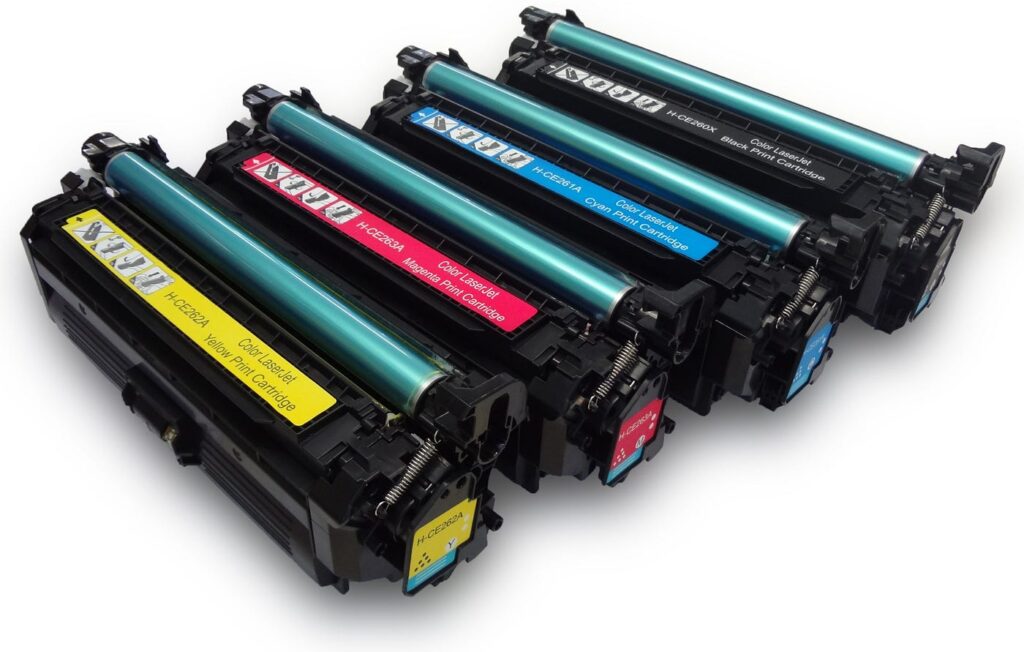
Step 4: Research OEM vs Compatible Cartridge Options
Compare original manufacturer cartridges with reputable third-party alternatives by examining page yield specifications, print quality samples, and user reviews. Focus on established compatible brands with positive reputations and satisfaction guarantees.
Request sample prints from compatible cartridge suppliers when possible, or research independent testing results that compare quality directly. The best printer cartridge choice often involves compatible options that deliver 90% of OEM quality at 50% of the cost.
Step 5: Check Page Yield and Cost-Per-Page Calculations
Calculate actual cost per page by dividing cartridge price by rated page yield, accounting for both black and color printing separately. This analysis reveals true value and helps identify the most economical options for your usage patterns.
Be aware that manufacturer page yield ratings assume 5% page coverage, which may not match your actual printing needs. Heavy graphics, photos, or solid color areas consume significantly more ink than standard test pages used for ratings.
Step 6: Verify Supplier Reputation and Return Policies
Research cartridge suppliers thoroughly, reading customer reviews, checking Better Business Bureau ratings, and verifying return policies before purchasing. Reputable suppliers offer satisfaction guarantees and responsive customer service for problem resolution.
Choose suppliers with comprehensive warranty coverage and hassle-free return processes for defective or unsatisfactory cartridges. The best printer cartridge deals become worthless if suppliers don’t stand behind their products or provide adequate support.
Step 7: Consider Bulk Purchasing and Storage Requirements
Evaluate bulk purchasing options that offer additional savings for frequently used cartridge types. Many suppliers provide significant discounts for multiple cartridge purchases, reducing per-unit costs while ensuring adequate inventory.
Assess proper storage conditions for cartridges including temperature control, humidity protection, and expiration date management. Improper storage can degrade cartridge performance and void warranties, eliminating potential savings from bulk purchases.
Step 8: Test and Monitor Performance Over Time
Start with small orders to test compatible cartridges before committing to large purchases. Monitor print quality, page yields, and reliability over several months to verify that your chosen cartridges consistently meet expectations and requirements.
Keep detailed records of cartridge performance including actual page counts, quality issues, and cost calculations. This data helps refine future purchasing decisions and identifies the best printer cartridge options for your specific applications.
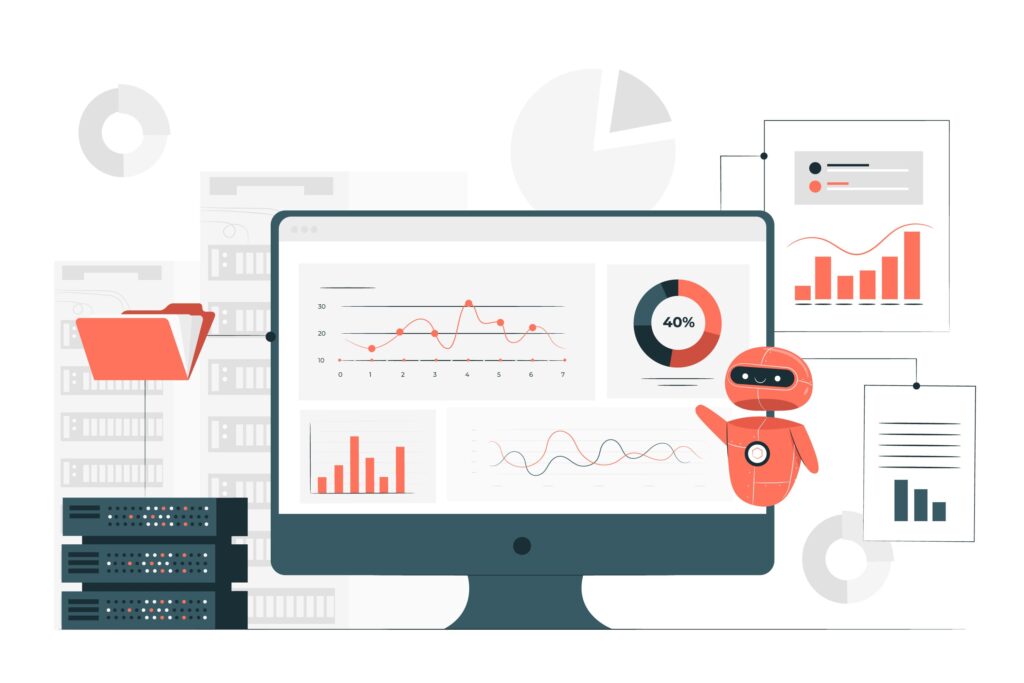
Advanced Tools and Expert Insights for Cartridge Selection
Online cartridge compatibility databases from manufacturers and third-party suppliers provide comprehensive cross-reference tools for finding suitable alternatives. These databases help identify all compatible options for your printer model while comparing specifications and prices effectively.
Print cost calculators available on manufacturer websites and independent review sites help estimate long-term expenses based on your usage patterns and cartridge choices. These tools reveal true cost differences between various options over extended periods.
Professional testing laboratories like Consumer Reports and independent technology publications provide unbiased cartridge comparisons focusing on quality, reliability, and value. These evaluations offer objective assessments beyond marketing claims and user opinions.
Cartridge recycling programs from manufacturers and third-party organizations provide environmental benefits while sometimes offering purchase discounts or credits. Participating in these programs reduces waste while potentially lowering future cartridge costs through incentive programs.
Common Mistakes When Selecting Printer Cartridges
Choosing Based Solely on Price
Extremely cheap cartridges often provide poor quality, low page yields, or cause printer damage that exceeds any initial savings. These bargain options frequently fail prematurely or produce unacceptable results requiring reprints and wasted time.
Focus on value rather than just low prices by calculating cost per page and considering quality requirements. The best printer cartridge balances affordability with reliability and acceptable performance for your specific applications.
Ignoring Page Yield Specifications
Many consumers compare cartridge prices without considering page yield differences, leading to poor value decisions. A cheaper cartridge with half the page yield actually costs twice as much per page as a more expensive option with higher capacity.
Always calculate cost per page using manufacturer specifications, but remember that actual yields vary based on your printing patterns, document types, and printer settings. Heavy graphics and photos consume more ink than standard text documents.
Mixing OEM and Compatible Cartridges
Installing different cartridge types simultaneously can cause color matching problems, performance inconsistencies, or printer error messages. Some printers detect cartridge types and may refuse to operate with mixed installations or display warning messages.
Choose consistent cartridge types for all colors to ensure optimal performance and avoid potential compatibility issues. If switching from OEM to compatible cartridges, replace all cartridges simultaneously for best results.
Improper Storage and Handling
Cartridges stored in extreme temperatures, direct sunlight, or high humidity environments can degrade before installation, resulting in poor print quality or complete failure. Improper handling can also damage delicate components or cause leaks.
Store cartridges in original packaging at room temperature in dry locations until ready for installation. Handle cartridges carefully, avoiding contact with electrical contacts or printhead nozzles that could cause performance problems.
Frequently Asked Questions
Q: Are compatible cartridges as good as OEM cartridges for print quality? A: High-quality compatible cartridges from reputable manufacturers typically deliver 85-95% of OEM quality at 50-70% lower cost. The best printer cartridge choice depends on your quality requirements versus budget constraints for specific applications.
Q: Will using compatible cartridges void my printer warranty? A: No, using compatible cartridges cannot legally void your printer warranty under US law. However, if a compatible cartridge damages your printer, the cartridge manufacturer, not the printer manufacturer, would be responsible for repair costs.
Q: How long do printer cartridges last before expiring? A: Most cartridges have shelf lives of 18-24 months when stored properly in original packaging. Expiration dates are printed on packaging, and using expired cartridges may result in poor print quality or clogged printheads.
Q: Should I buy cartridges in bulk to save money? A: Bulk purchasing can provide significant savings if you use cartridges regularly and can store them properly. Only buy quantities you’ll use within 12-18 months to avoid expiration issues, and ensure adequate storage conditions.
Conclusion
Selecting the best printer cartridge requires balancing quality expectations, budget constraints, and usage patterns to maximize value while meeting your specific printing needs. The eight-step process outlined in this guide helps navigate complex options and identify optimal solutions for any application.
Remember that the best printer cartridge choice isn’t necessarily the cheapest or most expensive option, but rather the one that delivers acceptable quality at reasonable cost for your specific requirements. Consider compatible cartridges from reputable suppliers as viable alternatives to expensive OEM options.
Take time to research thoroughly, test small quantities before bulk purchases, and monitor performance over time to refine your selection criteria. The right cartridge choice enhances productivity while controlling costs, making quality printing affordable and reliable.
Start your cartridge selection process today by identifying your printer model, calculating usage patterns, and researching quality suppliers that offer the best printer cartridge options for your unique needs and budget requirements.
Best Printer for Home Office: Ultimate Beginner’s Smart Guide Read More.

